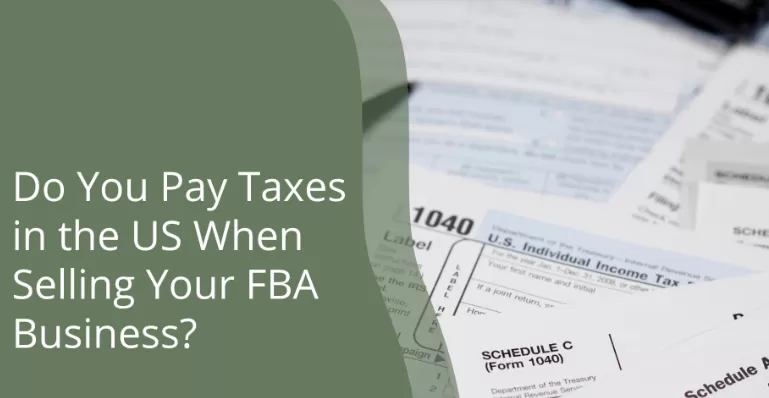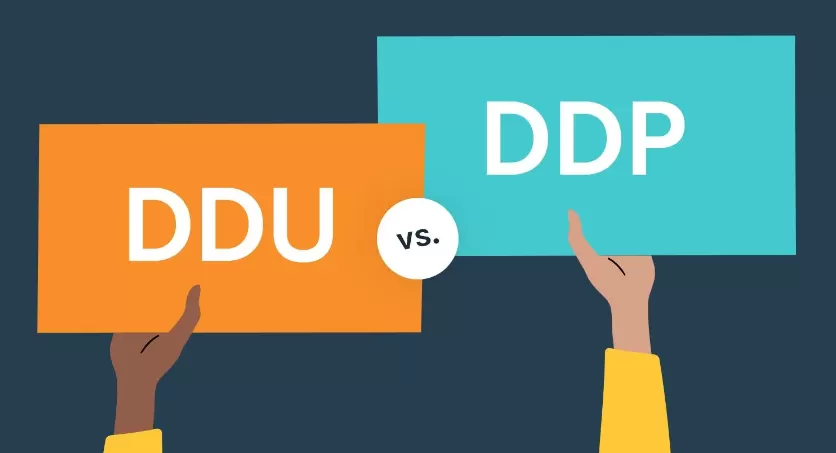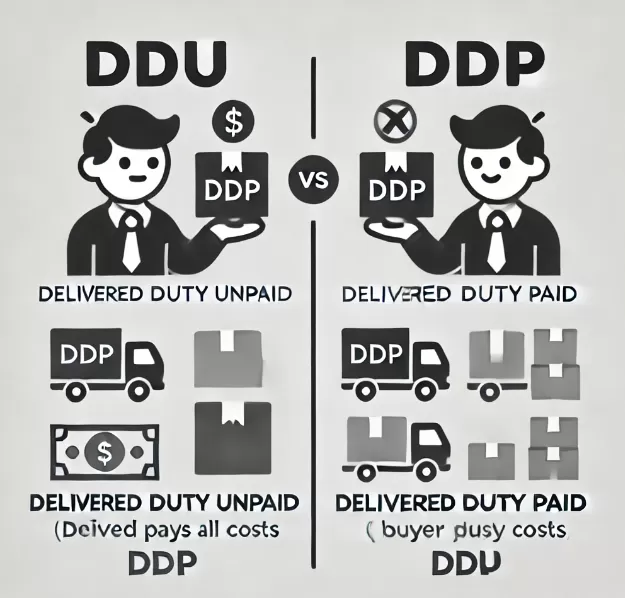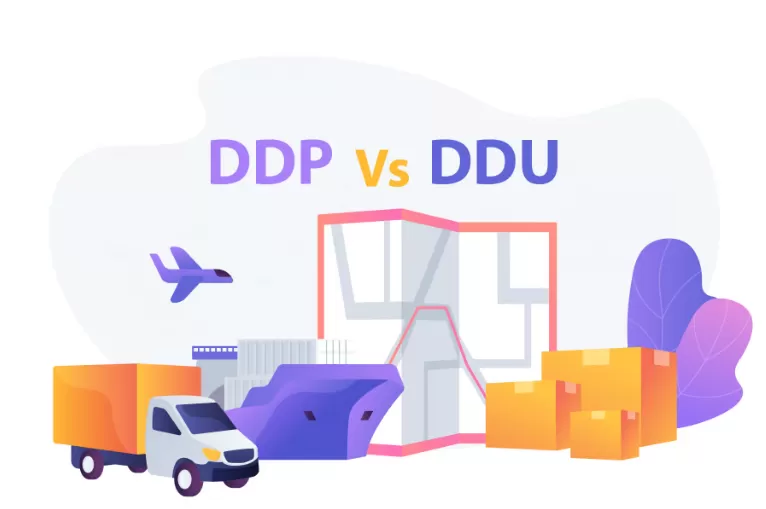As an Amazon FBA: Shipping from China to the United States, you’re an expert at optimizing PPC campaigns, sourcing products, and driving reviews. But when a How to Pick a Freight Forwarder for Amazon FBA asks if you want your shipment “tax-inclusive” or “tax-free,” the conversation can suddenly feel confusing. Which one actually saves you money? Is "tax-free" really free? And what are the hidden risks behind a lower initial quote?
Making the wrong choice here doesn't just affect your shipping bill; it can lead to devastating customs delays, unexpected fees that erase your profits, and inventory that misses the entire Q4 season.
Most discussions on this topic are unhelpfully vague or, worse, confuse import duties (the taxes you pay to customs) with US sales tax (the tax you collect on Amazon). This guide exists to end that confusion.
We will cut through the jargon to give you a clear, actionable comparison between Delivered Duty Paid (DDP) and Delivered Duty Unpaid (DDU) shipping. You will find a real-world cost analysis, a step-by-step decision matrix tailored to your business size, and the critical questions to ask your logistics provider. By the end, you'll have the confidence to choose the right option, secure your supply chain, and protect your bottom line. Let's dive in.
(Table of Contents)
Clarifying the Confusion: It’s About Logistics, Not Sales Tax
The Core Concepts: Differences between DAP and DDP Explained
DDP vs. DDU: A Side-by-Side Comparison Chart
Real-World Cost Analysis: A $5,000 Shipment Example
The Decision Matrix: Which Shipping Term is Right for Your Business?
Action Plan: How to Talk to Your Freight Forwarder
Frequently Asked Questions (FAQ)
Clarifying the Confusion: It’s About Logistics, Not Sales Tax
If you're an Amazon FBA seller shipping goods to the United States, you've likely received quotes for "tax-inclusive" and "tax-free" shipping. The difference is critical, impacting your total landed cost, risk, and supply chain stability. But first, let's clear up a major point of confusion.
This article is exclusively about import duties and taxes (customs fees) handled by your freight forwarder. It is not about US state sales tax that you collect and remit through Amazon Seller Central.
Import Duties & Taxes (This Guide): Fees levied by U.S. Customs and Border Protection (CBP) when your goods enter the country. Your freight forwarder manages this.
Sales Tax: A consumption tax charged to the end customer on the sale of goods. You manage this within your Amazon account.
Understanding this distinction is the first step to making an intelligent logistics decision. Choosing the wrong shipping option can lead to unexpected charges, severe customs delays, and even having your inventory stranded at the port. This guide will give you the clarity you need.
The Core Concepts: DDP and DDU Explained Formally
The terms "tax-inclusive" and "tax-free" are informal business lingo. The official International Commercial Terms (Incoterms) are DDP and DDU.
Tax-Inclusive = Delivered Duty Paid (DDP)
Under DDP, your freight forwarder assumes maximum responsibility. They are your all-in-one solution, handling the entire journey from your supplier's door to the final destination (the Amazon FBA warehouse), including:
International transportation (sea/air).
Export and import FBA Customs Clearance Agent.
Payment of all applicable import duties, tariffs, and taxes to U.S. Customs.
Final trucking to the FBA center.
Think of DDP as a fixed-price, all-inclusive vacation. You pay one price, and the provider worries about the details. Your cost is predictable, and your risk is low.
Tax-Free = Delivered Duty Unpaid (DDU)
Under DDU, your freight forwarder's responsibility ends when the shipment arrives at the U.S. port of entry. They handle the physical transport but do not pay the import taxes on your behalf. You (the consignee) are responsible for:
Appointing a customs broker (if the carrier doesn't arrange it).
Providing correct documentation for U.S. customs.
Paying all calculated import duties and taxes directly.
Handling any issues that arise during customs inspection.
Think of DDU as a budget flight. The base fare seems cheap, but you pay extra for everything else—bags, meals, and seat selection. The final cost is uncertain until the very end.
DDP vs. DDU: A Side-by-Side Comparison Chart
This chart breaks down the key differences at a glance.
| Feature |
DDP (Tax-Inclusive) |
DDU (Tax-Free) |
| Customs Clearance Responsibility |
Freight Forwarder |
You (the Importer of Record) |
| Duty & Tax Payment |
Paid by the Freight Forwarder (billed to you upfront) |
Paid by You upon arrival |
| Cost Certainty |
Hi. You get an all-inclusive quote. |
Low. The final cost depends on customs' valuation. |
| Risk Level |
Low. Your forwarder manages risks and delays. |
Hi. You bear the risk of delays, fines, and storage fees. |
| Best For |
New sellers, small/medium batches, sellers without a US entity. |
Large-volume sellers with a US entity and dedicated logistics team. |
| Documentation Required from You |
Commercial Invoice, Packing List, etc. |
All of the above, plus the potential need for your Importer of Record information. |
Mapping the Journey: Your Cargo's Path Under DDP vs. DDU
Headline: The Fork in the Road: How Your Shipment's Path Diverges
Understanding the physical journey makes the difference crystal clear. Let's map it out.
The DDP (Tax-Inclusive) Pathway: A Seamless Conveyor Belt
Factory (China): We collect your goods.
Port of Export: We handle export customs.
Ocean/Air Transit: Your goods travel to the U.S.
Port of Arrival (e.g., LA/LB): This is the critical fork. We take over completely. Our assigned customs broker files the entry, pays the duties from our account, and clears the goods.
Cross-Dock/Warehouse: We arrange for the container to be unloaded.
Final Trucking: We book the truck to your designated Amazon FBA center.
Delivery: Goods are received at the warehouse. You’re notified. The process is seamless.
The DDU (Tax-Free) Pathway: A Road with Multiple Checkpoints You Must Manage
Factory to Port of Arrival (Steps 1-4): Same as above.
The Fork: The cargo arrives. The process stops. Our job is to notify you or your designated broker. The responsibility now shifts to you.
Your Tasks Begin:
You/your broker must file the customs entry.
You must submit all documents correctly.
You must pay the calculated duties and taxes to CBP.
Only After Clearance: Once customs releases the goods, we can proceed with steps 5-7.
See the difference? DDP is a single, managed journey. DDU requires you to actively intervene at the most critical point. For sellers without a U.S.-based team, this intervention is where everything can fall apart.
Visualizing the Worst-Case Scenario: The True Cost of a DDU Gamble
Headline: When DDU Goes Wrong: A Cost Breakdown of a Customs Nightmare
Everyone focuses on the best-case scenario. Let's talk about the worst-case. Imagine you’ve shipped a $20,000 shipment of seasonal goods, aiming for Black Friday. You chose DDU to save $300.
Day 1: Arrival. Your goods arrive in Los Angeles.
Day 2: Customs Exam. CBP selects your container for a random inspection. This incurs an examination fee ($500+) and requires detailed documentation.
Day 3-5: Delay. The exam happens. Your commercial invoice is questioned. CBP argues the value should be higher. This requires a response from you, causing delays.
Day 6-10: Demurrage & Detention. While this is sorted, your container sits on the port. Demurrage charges (for occupying port space) begin accruing at $150 per day. The trucker’s detention charges (for not returning the chassis) add another $100 per day.
Day 11: Release. The issue is resolved, but you now owe $500 (exam) + $1,500 (10 days demurrage) + $1,000 (detention) = $3,000 in unexpected fees.
Your total cost just ballooned. More critically, you’ve missed the shipping window for Black Friday. The "savings" from DDU just cost you thousands and your prime selling season. This is the hidden risk you carry as the Importer of Record under DDU terms.
Real-World Cost Analysis: A $5,000 Shipment Example
Let's move beyond theory. Here’s a realistic cost breakdown for shipping $5,000 worth of goods (HS Code: 8517.12.00 - Mobile Phones) Shipping from China to the United States via sea freight.
Scenario: DDP (Tax-Inclusive) Shipping
You receive one quote from your forwarder: $2,200.
This price includes ocean freight, fuel surcharges, port fees, customs brokerage, and all estimated import duties.
Your Total Landed Cost: $2,200. No surprises.
Scenario: DDU (Tax-Free) Shipping
Your forwarder quotes $1,700 for transportation only.
But wait, here are the additional costs you must pay:
Customs Brokerage Fee: ~$100 - $250.
Import Duty: Phones have a duty rate of 0%. However, there is an MPF (Merchandise Processing Fee) of 0.3464% ($17.32) and an HMF (Harbor Maintenance Fee) of 0.125% ($6.25) on the shipment value.
Potential Risk: If your commercial invoice is questioned and CBP revalues your goods at $6,000, you owe more. A customs exam could incur Exam Fees ($250-$500+) and Port Storage Fees (~$150/day).
Your Potential Total Landed Cost: $1,700 + $200 (brokerage) + $25 (fees) = $1,925.
Your Risky Total Landed Cost: $1,700 + $200 + $25 + $500 (exam) + $300 (storage) = $2,725.
The Insight: DDU seems cheaper but exposes you to financial uncertainty. For many sellers, the predictability of DDP is worth a slightly higher initial quote.
Actionable, Product-Specific Guidance: Choosing Based on Your Goods
Headline: It Depends on Your Product: Tailored Advice for Different Categories
The "best" choice isn't universal; it's specific to what you're selling. Here’s a breakdown by product type:
For High-Duty Products (e.g., Furniture, Lighting, Textiles):
Our Advice: OVERWHELMINGLY DDP.
Why? Your duty rate can be significant (e.g., 25% for certain furniture). A small error in classification or valuation under DDU can lead to massive duty underpayments, penalties, and audits.
With DDP, our experts correctly classify your goods and build the exact duty cost into your quote. The cost certainty is non-negotiable.
For Sensitive/Regulated Products (e.g., Electronics, Cosmetics, Items with Batteries):
Our Advice: STRONGLY DDP.
Why? These goods require additional certifications from agencies like the FCC or FDA. The clearance process is complex. Our DDP service includes managing this entire process. Going the DDU
route means you, the seller, are responsible for complying with these complex U.S. regulations—a huge liability.
For Low/Zero-Duty Products (e.g., Books, Certain Plastic Products):
Our Advice: DDU becomes a viable option, but weigh the administrative burden.
Why? The financial risk is lower. However, you must ask yourself: Do you have a U.S. entity and a customs broker? Are you prepared to handle the paperwork? For most sellers, the time spent managing a DDU shipment is still worth more than the minor savings. The "hands-off" nature of DDP often remains the better value.
The Decision Matrix: Which Shipping Term is Right for You?
Use this checklist to make the right choice for your business.
Choose DDP (tax-inclusive) if you check any of these boxes:
✅ You are a new or growing seller. Your focus is on sales, not complex logistics.
✅ You ship small to medium volumes. The cost savings of DDU are negligible and not worth the risk.
✅ You lack a U.S. business entity or Employer Identification Number (EIN). This is often required to act as the Importer of Record under DDU.
✅ You value predictability and peace of mind. You need to know your exact cost per unit to calculate profit margins accurately.
✅ Your product classification is complex. If your goods have a high or variable duty rate, let experts handle it.
Consider DDU (tax-free) only if you check all of these boxes:
✅ You are a high-volume seller with a dedicated logistics team in the U.S.
✅ You have a registered U.S. entity and an EIN, allowing you to be the official Importer of Record.
✅ You have an established relationship with a reliable U.S. customs broker.
✅ You are shipping very high volumes where even minor per-unit savings are significant.
Action Plan: How to Talk to Your Freight Forwarder
Be proactive. When requesting a quote, use these specific questions to ensure clarity and avoid misunderstandings.
"Is this quote based on DDP or DDU terms to the final Amazon FBA warehouse?" (This is the most important question).
If DDP: "Does this all-in price include How to solve the US Amazon FBA warehousing customs clearance problem, bond, and all applicable duties and taxes for the USA? Are there any potential hidden fees?"
If DDU: "Can you provide an estimate for the customs clearance fees and duties? Who will be the The Ultimate Guide to Finding and Choosing the Right Customs Broker, and what information do I need to provide as the importer of record?"
"What is the HS code you are using to calculate the duty rate, and can you confirm it's correct for my product?"
Addressing the Trust Gap: Why We recommend DDP (And It's Not Just Upselling)
Headline: The Real Reason We Advocate for DDP Shipping
Let's be frank. You might wonder if we push DDP to pad our profits. The truth is far more straightforward: we recommend DDP because it minimizes failure.
Think of it from our perspective. Our reputation hinges on your supply chain's reliability. A DDU shipment is a gamble. When your cargo gets stuck at customs because of paperwork issues, unpaid duties, or a missed communication, it becomes our problem too. We deal with frantic emails, port storage fees piling up, and an unhappy customer.
With DDP, we control the process. We handle the customs clearance with our experienced brokers, pay the duties upfront with our bond, and ensure a smooth, predictable transition from ship to warehouse. This results in a satisfied seller who gets their inventory on time and is more likely to become a long-term partner. We recommend DDP not to make a quick buck, but to build a reliable business relationship. It’s the smarter, safer path for both of us.
Frequently Asked Questions (FAQ)
Q1: What is the main difference between tax-inclusive and tax-free shipping?
The core difference is responsibility. Tax-inclusive (DDP) means your freight forwarder handles everything, including taxes. Tax-free (DDU) means you are responsible for the taxes and customs clearance upon arrival.
Q2: Is tax-free shipping really cheaper?
Not always. The initial freight quote may be lower, but the final cost can be higher after adding customs brokerage, duties, and potential exam fees. DDP offers cost certainty.
Q3: What happens if I choose DDU and can't pay the duties?
The cargo will be held by customs. After a certain period, it will be considered abandoned and may be seized or destroyed. You will also incur accruing storage fees. This can be catastrophic for your business.
Q4: What's the difference between import duty and Amazon sales tax?
Import duty is a tax paid to the government for goods entering the country. Amazon sales tax is a tax paid by the consumer within the country on a sale. They are completely separate.
Q5: Why is providing an accurate HS code so important?
The HS code determines the duty rate and import regulations. An incorrect code can lead to wrong duty payments, customs delays, penalties, and even allegations of fraud. Your freight forwarder can advise, but the ultimate responsibility for correct classification lies with the importer.

 EN
EN
 FR
FR
 ES
ES
 JA
JA
 PT
PT
 RU
RU
 AR
AR








